Born on the 31st of August 12 AD in Antium, modern day Anzio, Italy, Caligula was a member of the Julio Claudian dynasty; the first ruling family of the Roman Empire. His father was a popular Roman General while his mother was the granddaughter of Augustus Caesar. Emperor Tiberius is said to have plotted the murder of Caligula’s father and he also eliminated most of Caligula’s family. However, he spared the life of Caligula, who became emperor after his death in 37 AD. Though his early reign is considered brilliant, Caligula is mostly remembered for his despotic rule, insanity, perversion and acts of extreme cruelty making him among the iconic ‘bad guys’ in the annals of history. Know more about the life, family, reign and assassination of Emperor Caligula through these 10 interesting facts.
#1 CALIGULA WAS HIS NICKNAME
Caligula was named Gaius Julius Caesar after the famous Roman politician and general, who was related to Caligula. His real name was Gaius Julius Caesar Germanicus. Caligula was the third son of the popular Roman general Germanicus, and Agrippina the Elder, the granddaughter of Augustus. During his infancy, Germanicus brought his son to a gathering. The little Gaius was dressed up in a uniform wearing a tyke’s caligae; a child’s replica of the heavy-soled hobnailed military boots which were worn by Roman soldiers. It was here that his father’s troops called the boy ‘caligula’ or ‘little boots’ in good humor. The nickname stuck and, with time, it became so popular that it finally eclipsed his real name after his death. Gaius is reported to have disliked his nickname.
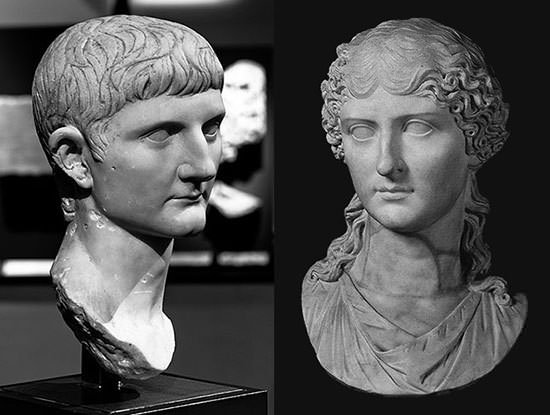
#2 TIBERIUS CONSPIRED TO ERADICATE HIS FAMILY
After the death of Augustus in 14 AD, his adopted son Tiberius became emperor of Rome. At the time, Caligula’s father Germanicus was a popular commander with a noble reputation in the Roman Empire. Germanicus, like Tiberius, was from the Julio Claudian family lineage; the first ruling family of the empire. He was thus in a way a political rival to the ruler. Roman historian Suetonius, among others, ascertain that the death of Germanicus in Syria was a political murder by the agents of Tiberius. Caligula’s mother Agrippina the Elder publicly blamed Tiberius for her husband’s death and craved for revenge. Tiberius imprisoned Agrippina the Elder on a remote island, where she is said to have starved to death. Caligula’s eldest brother, Nero, died in exile from either starvation or suicide and his other brother, Drusus Caesar, was imprisoned on charges of treason.
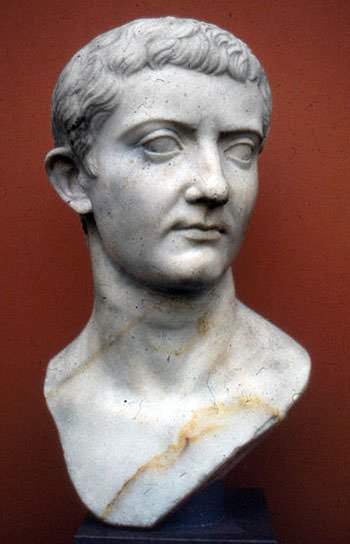
#3 HE MAY HAVE BEEN RAISED AS A SNAKE IN ROME’S BOSOM
With the death of his brothers and mother, Caligula and his sisters were powerless in front of the emperor. Caligula was sent to live with his great grandmother (Tiberius’s mother) Livia and, after her death, with his grandmother Antonia, who shielded him from political intrigues. In 31 AD, Caligula was sent to the personal care of Tiberius in Capri, where he lived for 6 years. There are numerous theories on why Tiberius spared Caligula’s life. Caligula later even claimed to have hatched a plan to murder Tiberius. He threw the dagger on the floor instead of carrying on with his plan and yet he was forgiven. Roman historian Suetonius makes an interesting claim that the cruel and vicious Caligula was more a revenge for the unpopular Tiberius, his purpose was to allow Caligula to live in order that he “… prove the ruin of himself and of all men, and that he was rearing a viper for the Roman people and a Phaethon for the world.”

#4 HIS FIRST FEW MONTHS AS EMPEROR ARE DESCRIBED AS BLISSFUL
Caligula became the third emperor of Rome in 37 AD, not aged more than 25 years. The crowning of the new emperor was widely welcomed by the people of Rome, who were displeased with the rule of Tiberius. They viewed him as the son of the noble Germanicus and hailed him nicknames like ‘our baby’ and ‘our star’. He gave bonuses to the soldiers, freed citizens that had been unjustly imprisoned by Tiberius, and eliminated an unpopular tax. Roman historian Philo described the first few months of the rule of Caligula as completely blissful.
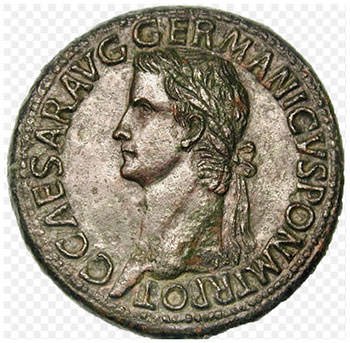
#5 CALIGULA MURDERED AND EXILED HIS FAMILY
It is noted that Caligula fell seriously ill in late 37 AD. He however recovered in time but not without turning bitter, resentful and as many claim on verge of insanity. Perhaps he felt that he was poisoned and saw this as a conspiracy of his political rivals and close relatives. This saw him conduct many political assassinations; his cousin and the adopted son of Tiberius, Gemellus, was the first victim. Some historians claim he poisoned Antonia, his grandmother. His father-in-law Marcus Junius Silanus and his brother-in-law Marcus Lepidus were executed while two of this three sisters, Julia Livilla and Agrippina the Younger, were exiled. He also executed his sister Drusilla’s widower M. Aemilius Lepidus.
#6 HE IS INFAMOUS FOR BEING A SADIST
Caligula derived pleasure from inflicting pain or humiliation on others. He issued precise instructions to executioners on how prisoners should be killed slowly, one cut at a time. He was often present during the executions sometimes enjoying his food as it all happened. The victims’ families were forced to join him on many occasions. Also, there are numerous accounts of Caligula’s scandalous life and insanity. These include his having an incestuous relation with his sister Julia Drusilla; considering to appoint his beloved horse Incitatus to the high position of consul; making the mention of a goat in his presence as a capital offense; killing a gladiator in a mock fight; and parading his fourth wife Caesonia naked in front of his friends.
For details about the insanity of Caligula read this article

#7 CALIGULA WANTED TO BE WORSHIPED AS A LIVING GOD
Caligula wanted to be worshiped as “Neos Helios” or the New Sun and coins were minted in Egypt depicting him as the Sun God. He appeared in public dressed up as various gods and goddesses like Apollo and Venus. Temples were constructed for his worship, and heads of various gods were replaced by his own. He intended to place his statue at the temple of Jerusalem, a disastrous order which was avoided after some persuasion until he issued another order to do so. There were public appearances of him as God, and even the Senate was supposed to worship him as a living God.
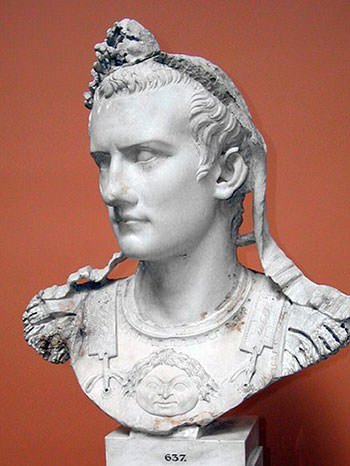
#8 HIS EXTRAVAGANCE BROUGHT FINANCIAL CRISIS TO ROME
Caligula lavished money in his short reign of four years. While praised for his aqueducts and ports, his self-obsession is severely criticized. He hosted extravagant sporting and cultural events; built a race track and temples for his worship; imported an Egyptian obelisk by sea; and, most notoriously, built a temporary floating bridge to defy a prophesy. According to biographers Cassius Dio and Suetonius, Caligula’s extravagance, generosity and irresponsible behavior burdened the state treasury significantly. According to Suetonius, in the first year of Caligula’s reign, he squandered 2.7 billion sesterces that Tiberius had amassed. This led to a financial crisis in Rome around 38 AD. Desperate measures had to be taken to replenish the wealth squandered by Caligula including asking public to lend money to the state, confiscation of property, auctioning of gladiators to downright extortion.
#9 CERTAIN HISTORIANS FEEL THAT HIS MISDEEDS ARE EXAGGERATED
It is wisely said that all of historical documents must be taken with a pinch of salt. There are certain historians who doubt the chronicles on Caligula feeling that they are greatly exaggerated. Claims of Suetonius like incest among others are challenged as he wrote The Lives of the Twelve Caesars, which remains the primary source on the life of Caligula, 80 years after Caligula was assassinated. The building of the infamous floating bridge across the Bay of Baiae, his financial misdemeanor and his perversion are also challenged. There are others that believe that his cruel and whimsical actions were due to a physical ailment; possibly temporal lobe epilepsy, hyperthyroidism or Wilson’s disease.
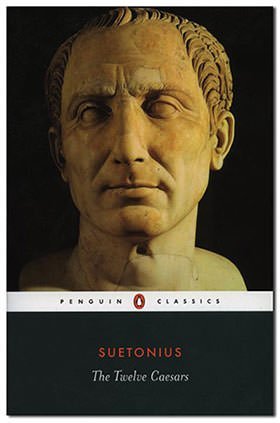
#10 HE WAS THE FIRST ROMAN EMPEROR TO BE ASSASSINATED
The Romans had had enough of the tyrannical and unpredictable Caligula. The emperor had been harsh with the powerful senate, nobility and the equestrian order. There had been conspiracies against him but his announcement of permanently leaving Rome for Alexandria perhaps served as his death knell. Such a move would have had grave political consequences for Rome and its elite. Hence, in 41 AD, after his return from Gaul, Caligula was murdered at the Palatine Games by the Praetorian guards led by Cassius Chaerea, Cornelius Sabinus and others. He was 29 years old. He was stabbed more than 30 times and was the first Roman Emperor to be assassinated. His wife Caesonia and his daughter were also put to death.
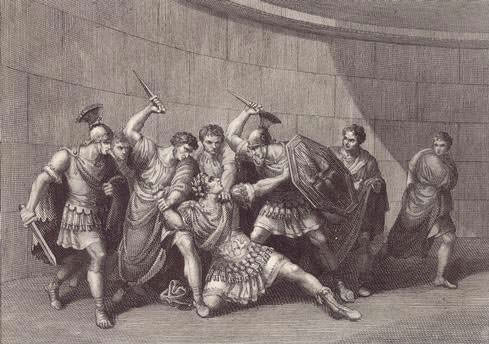
PHAETHON
Roman historian Suetonius compared Caligula to Phaethon. In Greek myth, Phaethon was the illegitimate son of the sun god, Helios. Taunted by his friends on his birth Phaethon asked his father some proof that would demonstrate his relation with him. On this Helios granted him whatever he wanted. Phaethon requested to ride the sun’s chariot for a day. Phaethon was unable to control the horses in the chariot and the earth was in danger of being burnt. To prevent further damage, Zeus hurled a thunderbolt at the chariot killing Phaethon in the process.


Really helpful for a beginner learning about Caligula
Happy to help.